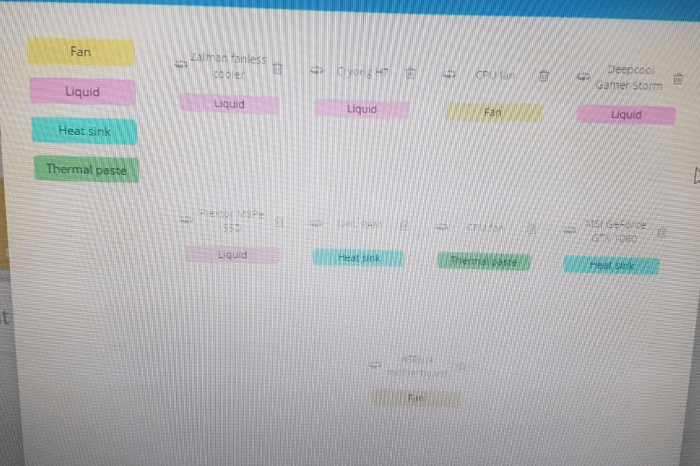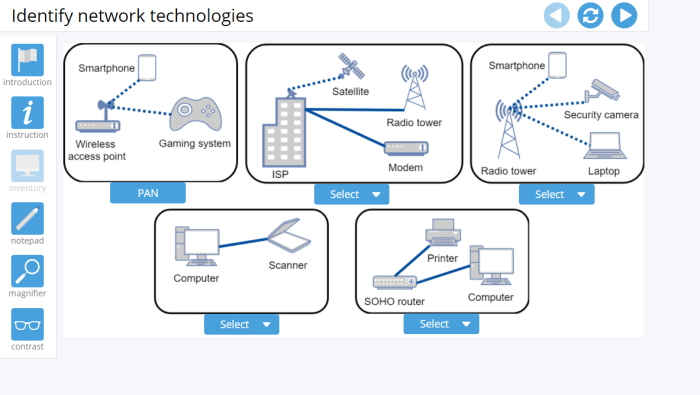Advanced Hardware Lab 4-2: Use Good Troubleshooting Methodology embarks on an enlightening journey into the intricacies of hardware troubleshooting, providing a comprehensive guide to resolving complex technical issues with efficiency and precision.
This lab delves into the fundamentals of troubleshooting, empowering learners with a systematic approach to identify, diagnose, and resolve hardware malfunctions. By mastering the art of troubleshooting, individuals can significantly enhance their hardware maintenance skills, minimize downtime, and optimize system performance.
Understanding Advanced Hardware Lab 4-2: Advanced Hardware Lab 4-2: Use Good Troubleshooting Methodology

Advanced Hardware Lab 4-2 is an essential learning experience designed to enhance students’ troubleshooting skills in the field of hardware maintenance. This lab emphasizes the significance of a structured troubleshooting methodology, enabling students to diagnose and resolve hardware issues efficiently and effectively.
The primary objective of this lab is to equip students with a comprehensive understanding of hardware troubleshooting techniques. By utilizing a systematic approach, students can identify and isolate the root causes of hardware problems, leading to accurate and timely solutions.
Effective Troubleshooting Methodology
Troubleshooting hardware issues requires a well-defined methodology that guides technicians through a series of logical steps. This systematic approach involves:
- Gathering data:Collect relevant information about the system, including error messages, diagnostic codes, and user observations.
- Analyzing symptoms:Interpret the gathered data to identify potential hardware components or configurations causing the issue.
- Isolating the root cause:Use a process of elimination to pinpoint the specific hardware component or setting responsible for the problem.
- Resolving the issue:Implement appropriate measures to fix or replace the faulty hardware or adjust the system configuration.
- Testing and verification:Conduct thorough testing to ensure the issue has been resolved and the system is functioning correctly.
Practical Applications in Lab 4-2
Lab 4-2 provides students with hands-on experience in applying the troubleshooting methodology to real-world hardware scenarios. This involves:
- Troubleshooting common hardware issues:Students will work through a series of common hardware problems, such as boot failures, memory errors, and component malfunctions.
- Decision-making flowchart:Students will create a flowchart to document the decision-making process involved in troubleshooting hardware issues.
- Essential tools and resources:Students will learn about essential tools and resources for effective hardware troubleshooting, including diagnostic software, testing equipment, and reference materials.
Benefits of Good Troubleshooting, Advanced hardware lab 4-2: use good troubleshooting methodology
Employing a systematic troubleshooting methodology offers numerous benefits, including:
- Improved efficiency:A structured approach reduces the time and effort required to identify and resolve hardware issues.
- Cost savings:Accurate and timely troubleshooting minimizes the need for unnecessary repairs or replacements, leading to cost savings.
- Reduced downtime:Efficient troubleshooting helps prevent prolonged system downtime, ensuring business continuity and data integrity.
Frequently Asked Questions
What is the primary objective of Advanced Hardware Lab 4-2?
To equip learners with a comprehensive understanding of troubleshooting methodology and its practical application in resolving hardware issues.
Why is troubleshooting methodology crucial in hardware maintenance?
Troubleshooting methodology provides a systematic approach to identifying and resolving hardware problems, minimizing downtime and ensuring efficient system operation.
What are the key steps involved in effective hardware troubleshooting?
Effective hardware troubleshooting involves gathering data, analyzing symptoms, isolating the root cause, and implementing appropriate solutions.
How does good troubleshooting methodology contribute to cost savings?
By resolving hardware issues quickly and accurately, good troubleshooting methodology reduces downtime, prevents data loss, and minimizes the need for costly repairs.

